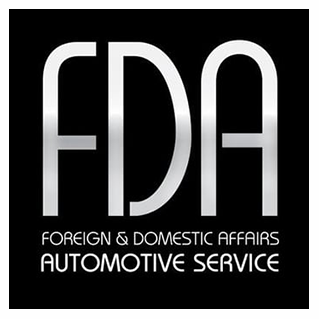ROTATE
Regular tire rotations extend the life of your tires , improve performance, and extend the life of steering and suspension components. The process for rotating tires is to remove each tire and reinstall at a different position on the vehicle. The primary benefit of tire rotations is to ensure that all for tires wear evenly. Tires can be rotated using a variety of patterns.
· Front Wheel Drive: Tires in front are moved to the rear and tires in the rear are crossed and moved to the front.
· Rear Wheel Drive: Tires in the front are crossed and moved to the rear and tires in the rear are moved to the front.
· 4-Wheel Drive: Tires in the front are crossed and moved to the rear and tires in the rear are crossed and moved to the front.
· Uni-Directional: (Tread Faces One Way) Tires in front are moved to rear and tires in rear are moved to the front. No crossing is done.
Tires should be rotated every six months or 6,000 to 8,000 miles.
INFLATE
Check your tire pressure monthly including your spare. It’s easy. Here’s How:
Wait until tires have been parked for at least 3 hours.
- Find (or purchase) your tire gauge.
- Insert pressure gauge into the valve stem on the tire.
- Read the number on the portion of the tire gauge that has “popped” out.
BALANCE
Tires usually need balancing whenever a tire is replaced or a new tire is purchased. An unbalanced tire will vibrate or shimmy. To correct an imbalance, a balancing machine is used to determine where corrections should be made. Weights are then attached to the wheel to eliminate the wobble.
ALIGNMENT
Your vehicle is not safe to drive when the alignment is off. The alignment process adjusts your vehicle’s front and rear suspension parts. You should take your car in for a professional alignment check if:
- You have hit something substantial
- See a wear pattern developing on the outer edges of the tires
- If you notice a difference in your vehicle’s handling.
Need Service?
More articles from FDA Foreign and Domestic Affairs Automotive

Fall Car Care Tips
Fall Car Care Tips Fall is a great time to pull out your owners manual and make a list of scheduled preventative maintenance. Winter is weeks away and getting your car in tip-top shape now, may help prevent... More

Change Your Oil Or Rely On The Experts?
With our technicians you dont ever need to change your oil or repair your car on your own. Our friendly and knowledgeable staff can fix almost any problem and perform regular maintenance, so why change you... More

How Do I Know if I Need Brakes?
How Do I Know if I Need Brakes? Brakes are one of the most important safety features on your car. Changing your brake pads in a timely manner helps keep you safe on the road and save you money. Drivi... More







